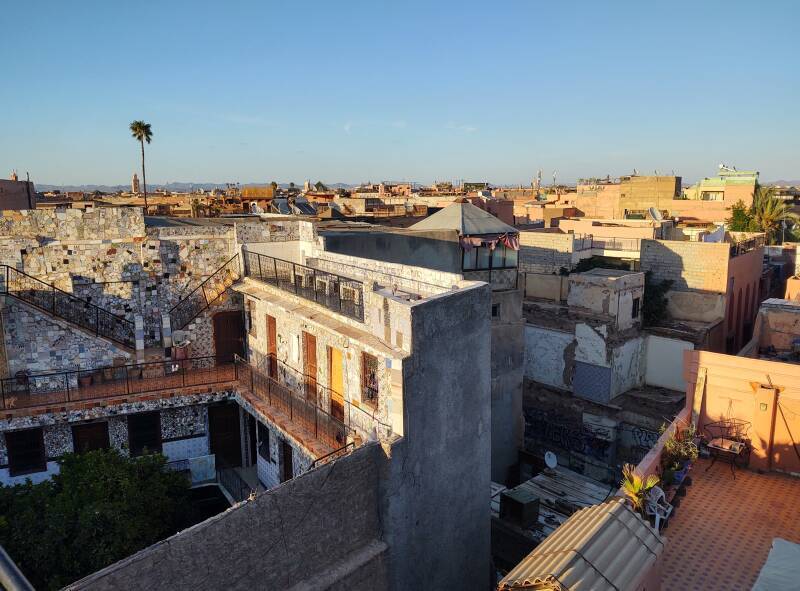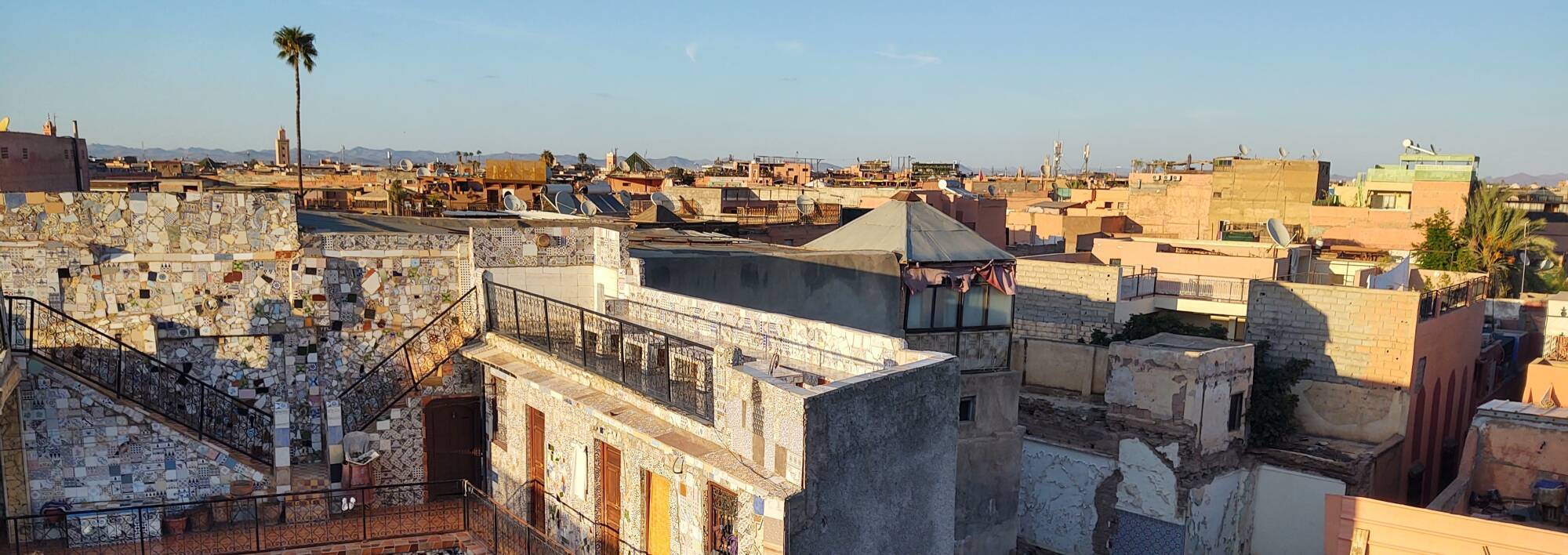
In the Medina
Wandering Through the Marrakech Medina
The medina
is the walled historic district within a
long-established city.
The word medīnah is Arabic for "city".
The colonial governors during the
French Protectorate of 1912–1956
made a point of mostly avoiding
any development of existing historic cities,
deliberately preserving them as areas of historic heritage.
The French instead built new planned cities
outside the old city walls,
the villes nouvelles.
European colonists mostly lived in these
western-style settlements.
The French approach in Morocco was one of a
"policy of association" that preserved local institutions
and elites.
This was quite different from the "policy of assimilation"
practiced in most colonies.
Here are some of the sights in the Marrakesh medina.
Starting the Day
In Marrakech, as in Tangier, Meknès, and Fez, I stayed in a guesthouse within the narrow streets of the medina. Marrakech is diverse. Riding in the petit taxi through the ville nouvelle from the train station to edge of the medina, I had passed a series of hotels catering to European and even American visitors, next to U.S. chain restaurants including Chili's, Papa John's Pizza, two Burger King locations, and a McDonald's.
French SchoolMenus
I had largely forgotten that by the time I returned to Marrakech a week later, as it had been the sort of roadside haze I'm accustomed to at home. And so I was once again startled by the American junk food incursion into Morocco. Marrakech is very popular with French visitors, but they aren't visiting the U.S. chain restaurants.
Guesthouses at Booking.comThat and the U.S. and European chain hotels weren't for me. I was staying in the medina at Hôtel Atlas, less than a hundred meters from Jemaa el-Fnaa.
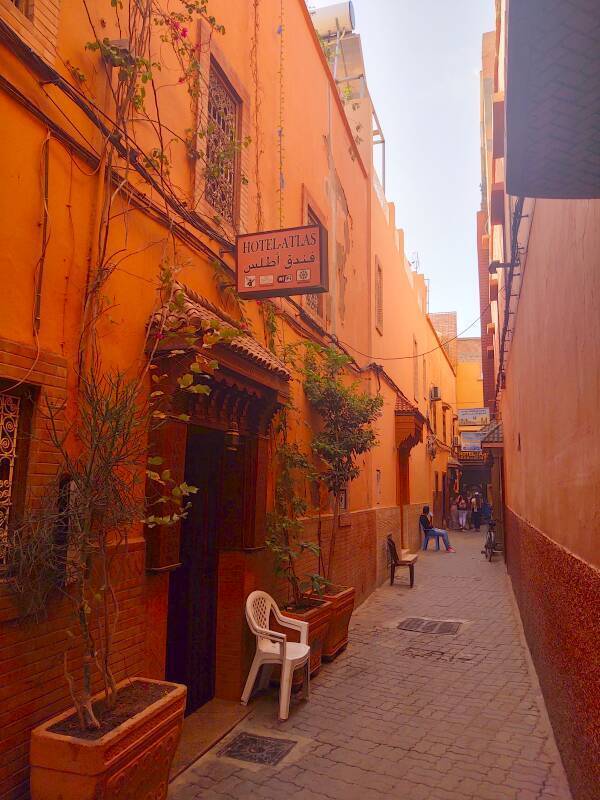
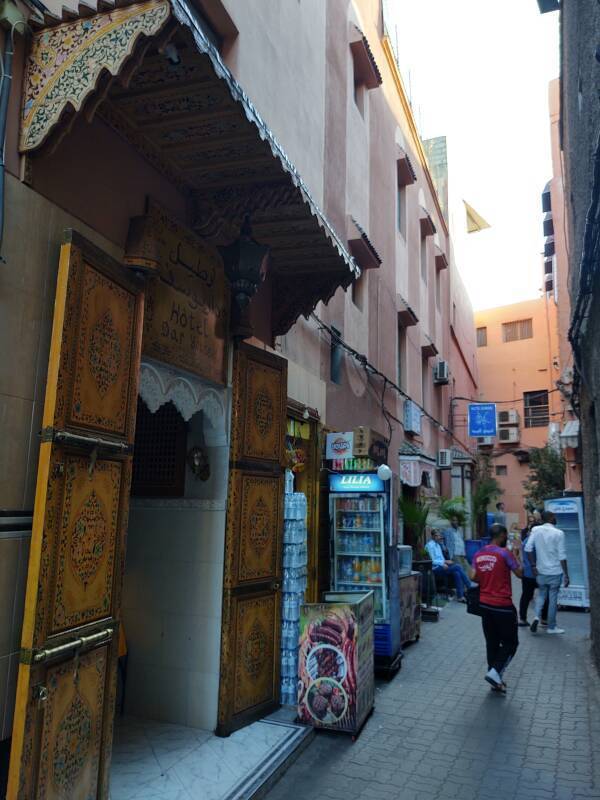
There are small shops where you can buy food and drink all through the medina. But I went to a small restaurant down the lane from my hotel for a proper breakfast.
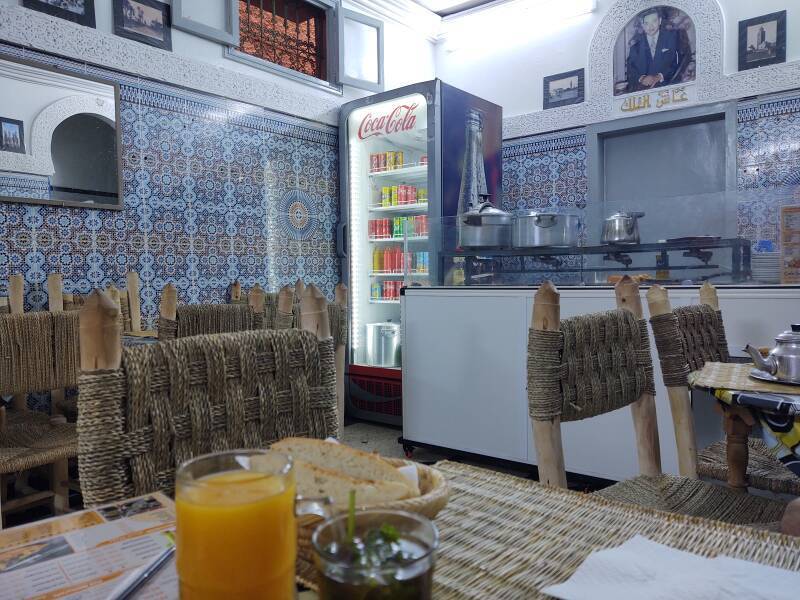
As in France, omelette means just eggs unless some addition is explicitly listed.
The pink material is processed meat, definitely with no pork at all.
There were several soft black olives, and two wedges of soft cheese. Plus, of course, bread. All of that with orange juice and tea to drink.
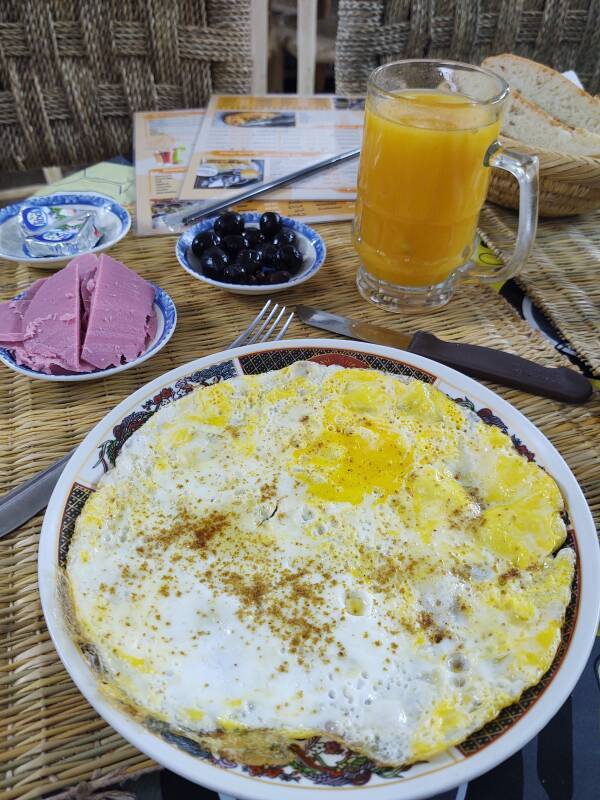
Through the Souqs
Many of the medina streets are narrow enough to be shaded by awnings extending from buildings on either side.
This is a major street leading south from Jemaa el-Fnaa. It gets its shade from sheets of fabric suspended by cords joining the buildings on either side.
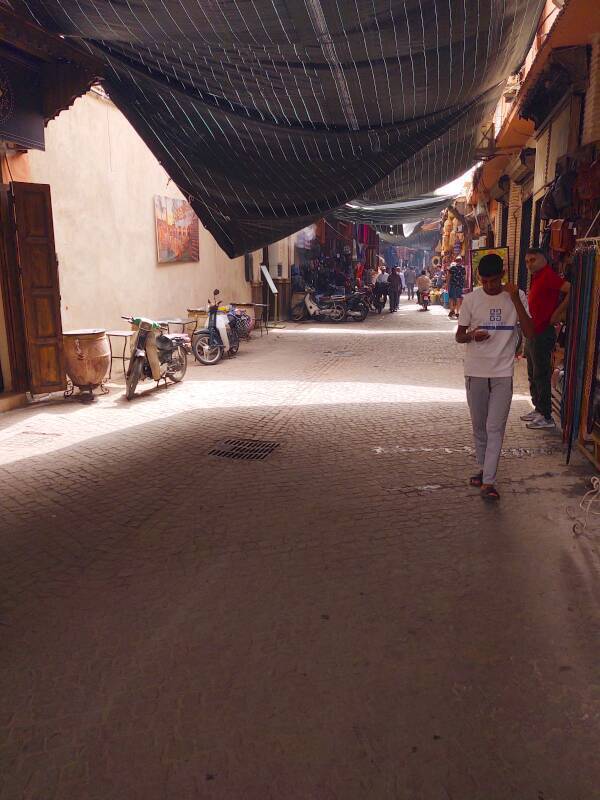
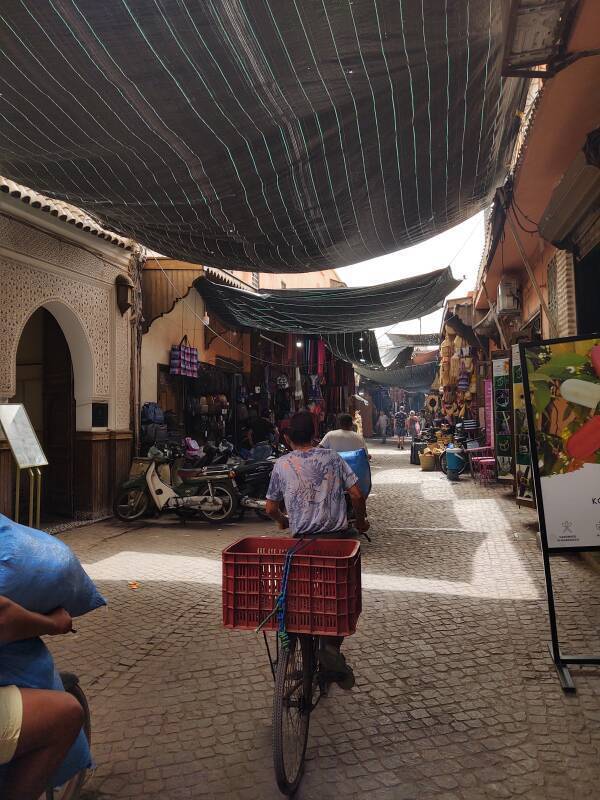
A metal-working souq has a metal cover, of course!
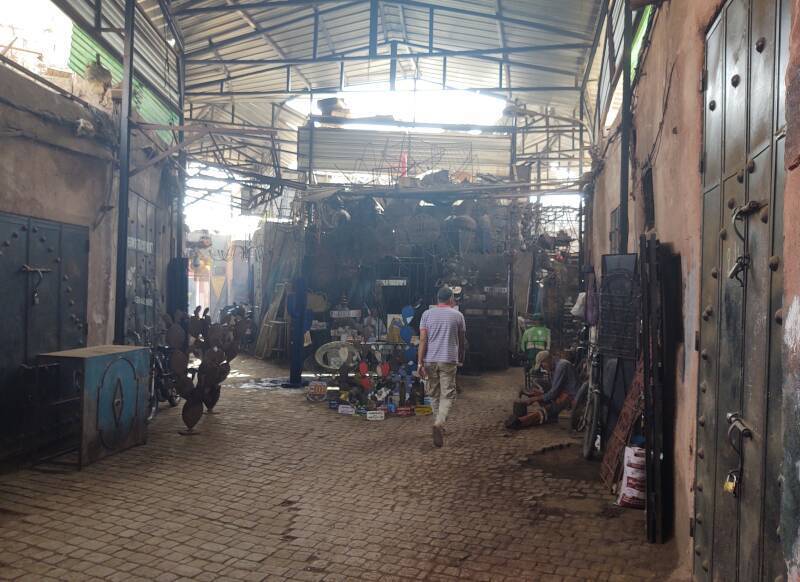
Woven reeds can form a souq cover. If you need to take a bathroom break, it's clearly marked.
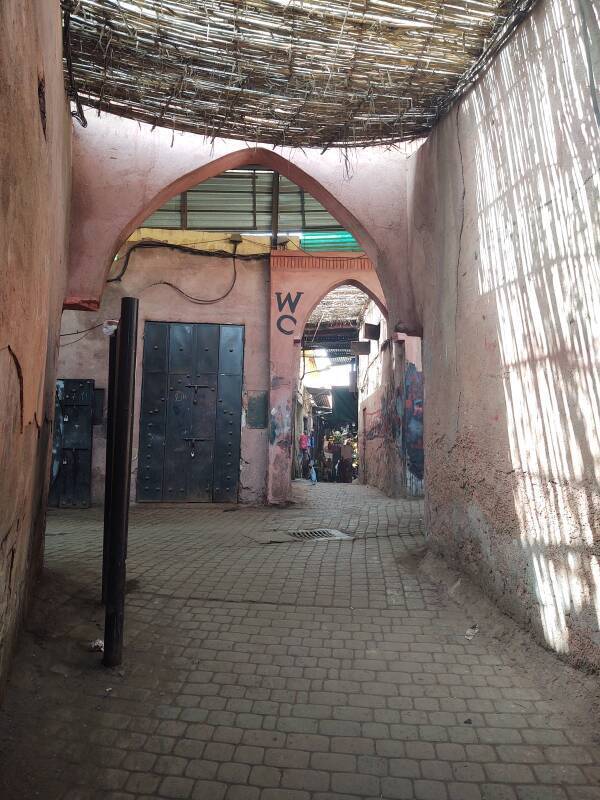
Overlooking the Medina
Mid-day I stopped for tea and a liter of water. The tea house had rooftop seating, where I had a view over the surrounding rooftops.

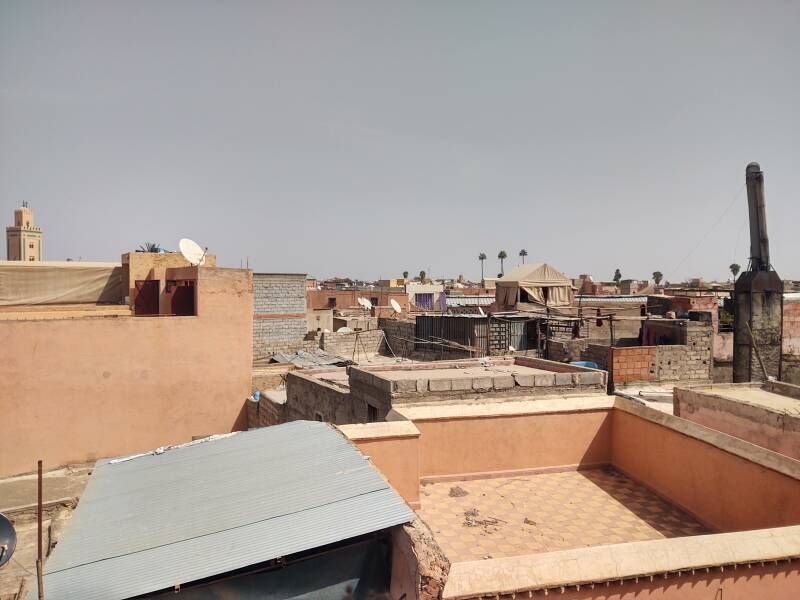
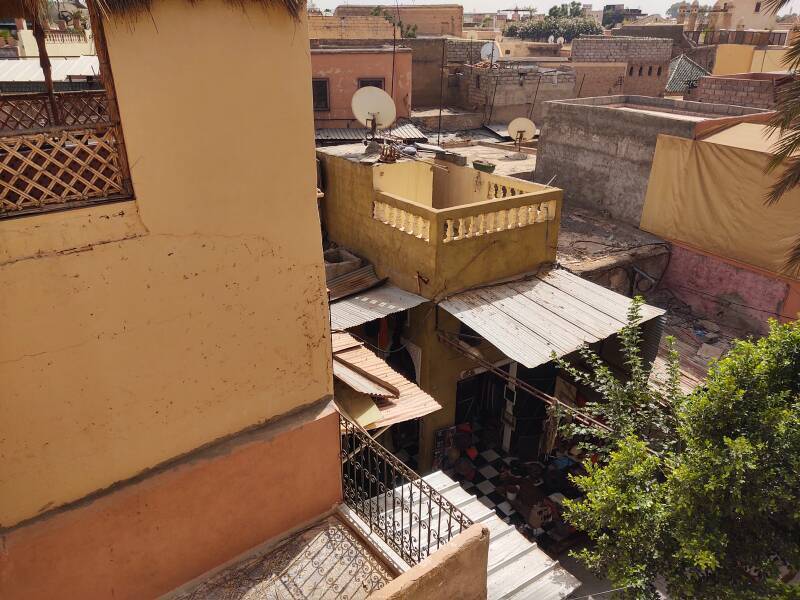
The stairs to the rooftop had a very narrow door leading to a private space squeezed into the architecture.
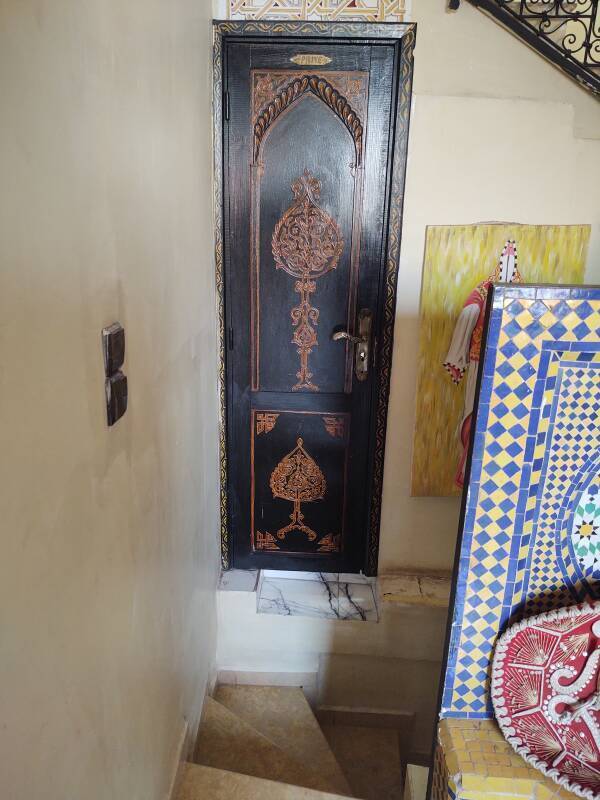
Funduqs
Silk Road hansin Turkey
A funduq, sometimes spelled foundouk or fondouk for French speakers, is an enclosed inn for merchants. What's called a funduq in western North Africa is known to the east of there as a caravanserai or a khan or han.
There are many funduqs in the Marrakech medina.
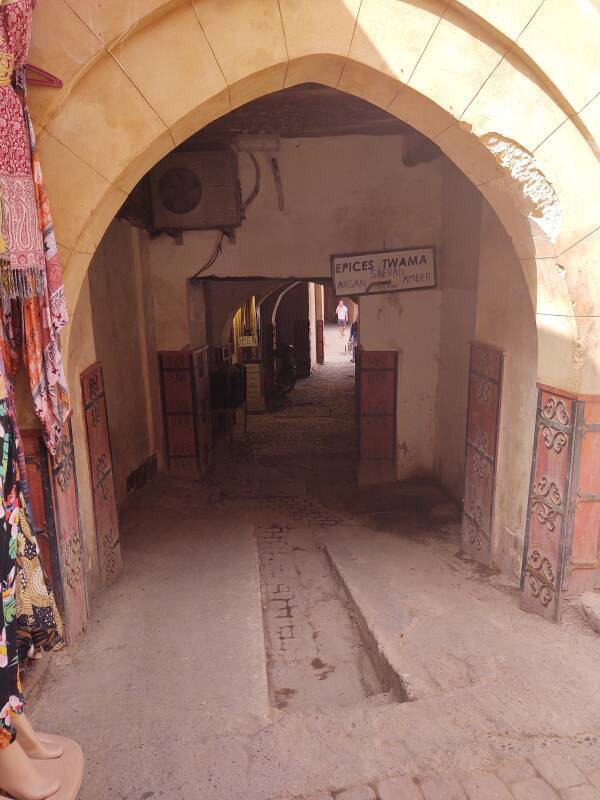
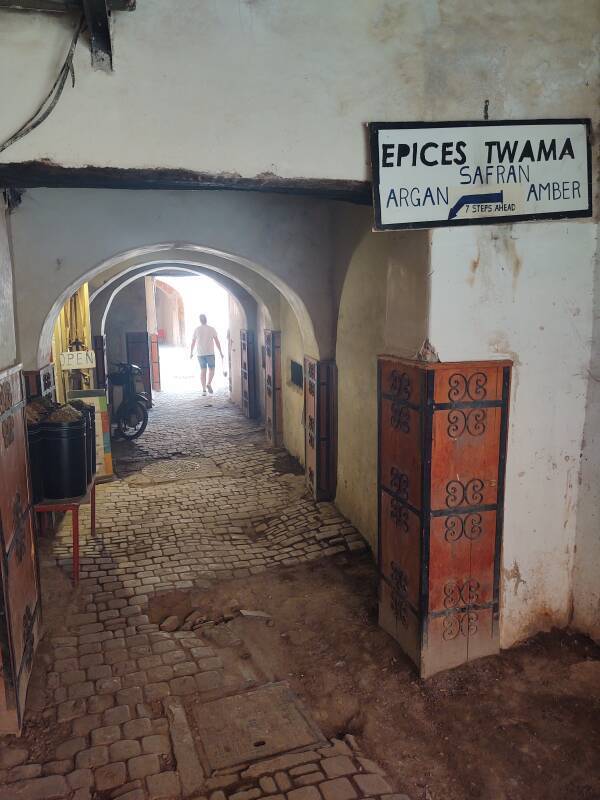
Argan is the Berber name for a flowering tree that produces nuts 2–4 cm long and 1.5–3 cm wide, containing oil-rich seeds. Most of the argan oil is collected and sold by women's co-operatives who use traditional skills dating back several generations. The women make money and become more aware of their rights, which are slowly improving (but still have far to go).
One such tradition has been allowing goats to climb the argan trees and eat the nuts. The seed kernels pass through the goats' digestive tract and then are retrieved from their droppings.
Edible argan oil is used as a dip for bread at breakfast, and as a dressing for salads and couscous and pasta. Starting in the early 2000s, it began being used outside Morocco for cosmetics, soap, and hair care products.
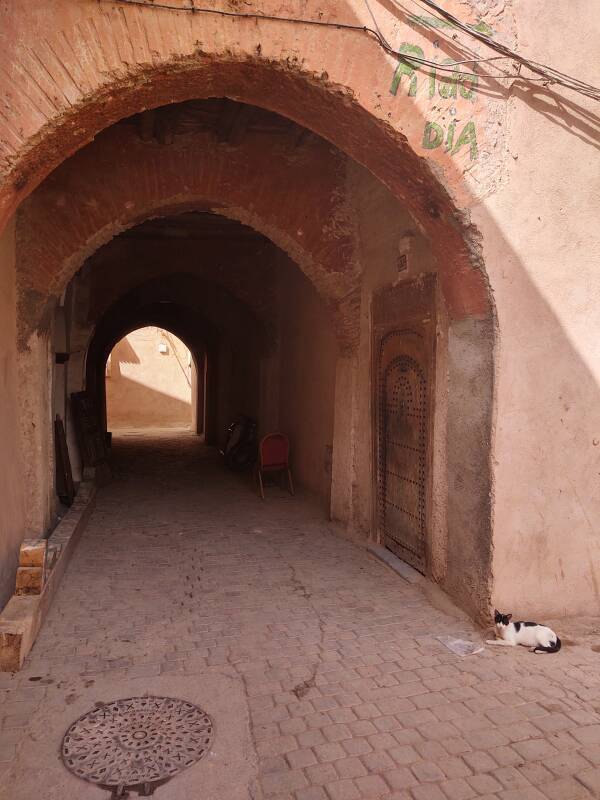
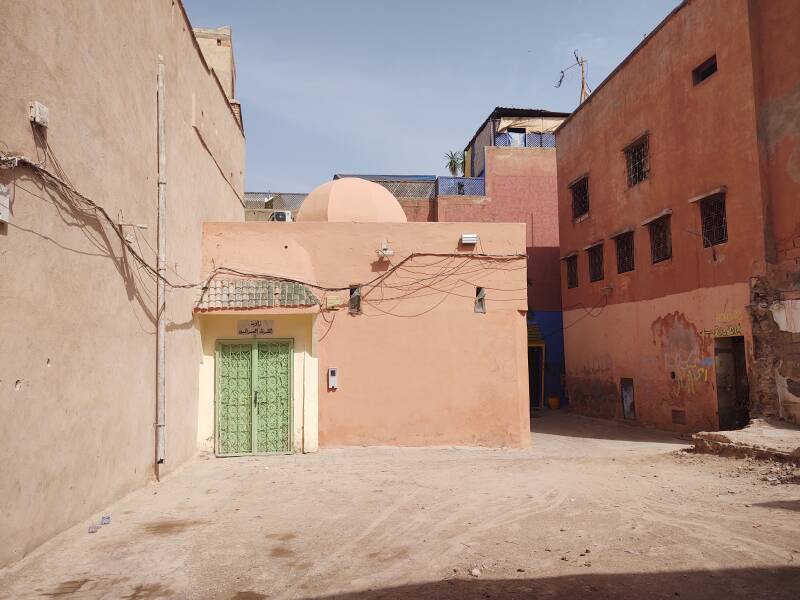
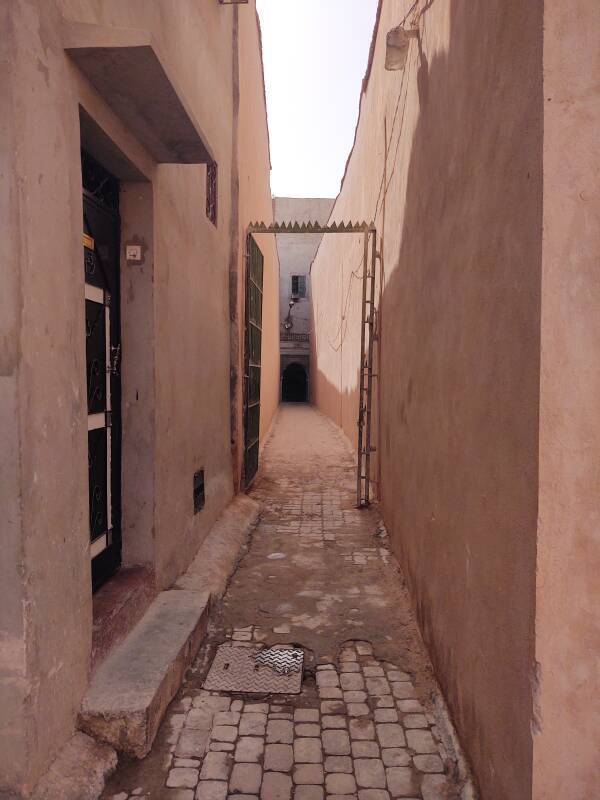
Mouassine Hammam and Fountain
The medina had around eighty fountains in 1900. About forty-five remained in the early 2020s. Why all the fountains? Because:
Each neighborhood in the medina is based around its mosque. And...
A mosque needs a mîdhâ, an ablutions facility, where worshipers can ritually clean themselves before praying. And...
The ablutionary water supply also feeds a fountain, providing water for drinking, cooking, and cleaning. And...
Some of the water is heated for a hammam, a public bath. And...
The fires used to heat the hammam water can also heat ovens where neighborhood residents' bread is cooked. Residents and café owners prepare their dough and then puncture or cut it in personalized patterns so they can retrieve it after it has been baked in the community ovens.
So, the neighborhoods have fountains, baths, and bakeries. Some of the fountains are small and simple, others are large and ornate. The Mouassine fountain and hammam complex is one of the prominent ones. Its hammam was built in 1562, during the Saadian dynasty era.
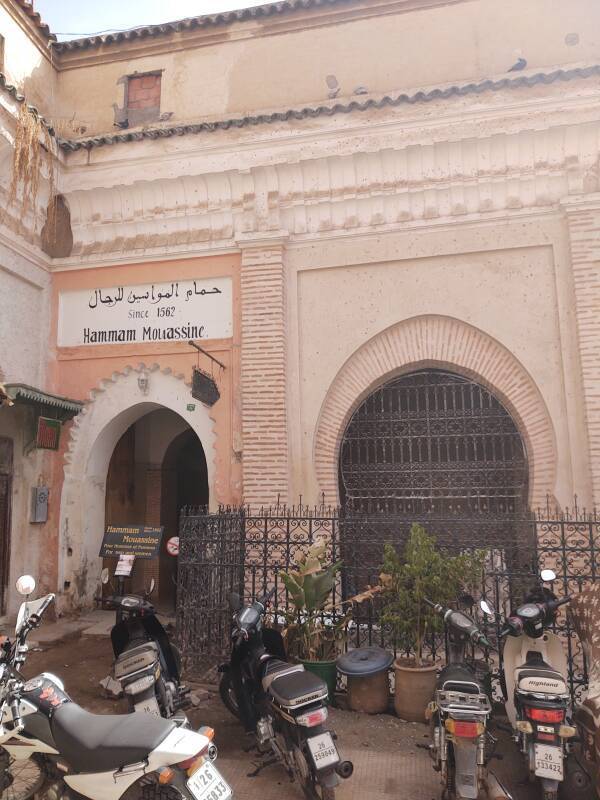
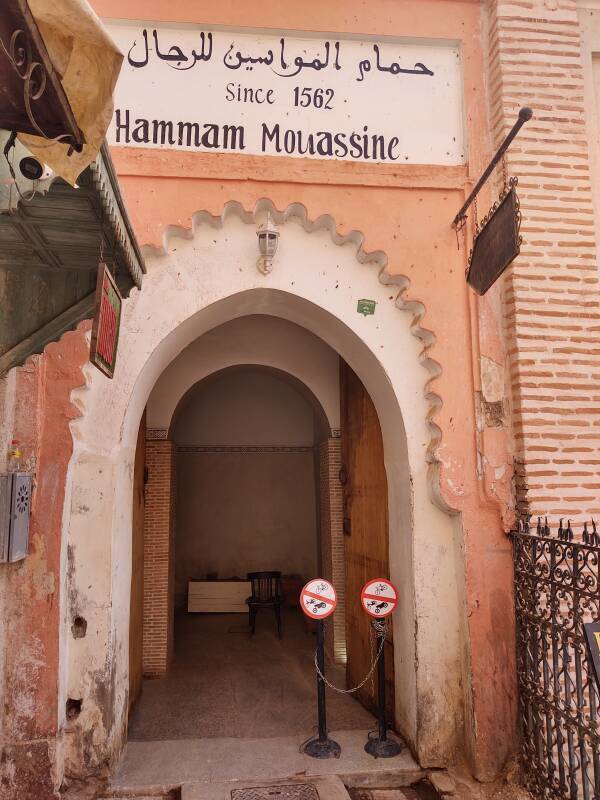
| Dynasties of Morocco | |
| Idrisi | 788–974 |
| Almoravid | 1040–1147 |
| Almohads | 1147–1269 |
| Marinids | 1269–1465 |
| Wattasid | 1472–1554 |
| Saadi | 1510–1659 |
| 'Alawi | 1631–present |
The associated Mouassine Mosque, the heart of this complex, was built in 1562–1563 and 1572–1573 under the orders of the Saadian sultan Abdallah al-Ghalib.
The Mouassine Mosque complex also includes a library, and it once included a children's Quranic school which is no longer in operation. The mosque's ablutions facility is adjacent to the hammam and the fountain.
I said, "O Messenger of Allah, my mother has died. Shall I give charity on her behalf?"
The Prophet said: "Yes."
I said, "Which charity is best?"
The Prophet said: "A drink of water."
— Ḥadīth reported by Sa'd ibn 'Ubadah
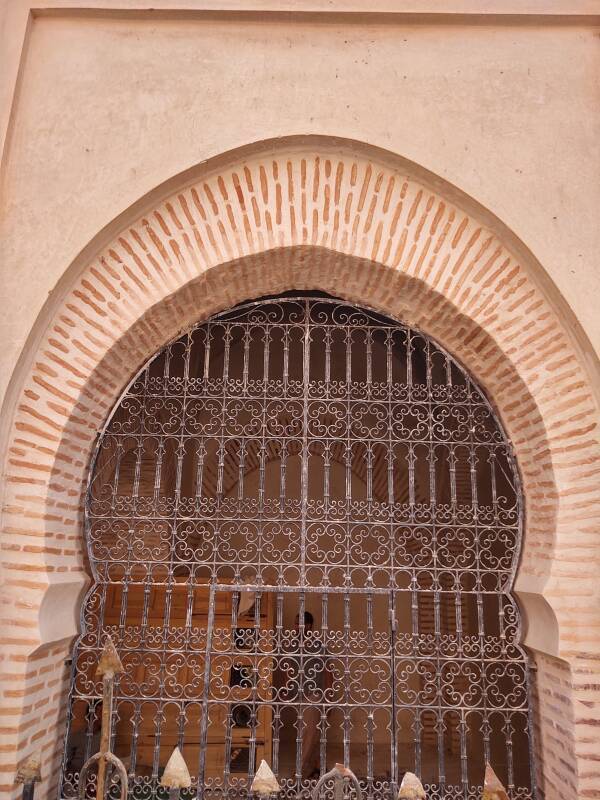
Zakat is a mandatory form of almsgiving which is often considered to be a tax. The caliph Abu Bakr, considered by Sunni Muslims to be Muhammad's successor, established the first statutory zakat system. As of 2010, zakat was mandatory by national law in Libya, Malaysia, Pakistan, Saudi Arabia, Sudan, and Yemen. Voluntary zakat collection programs were run by the national governments of Bahrain, Bangladesh, Egypt, Indonesia, Iran, Jordan, Kuwait, Lebanon, Maldives and the United Arab Emirates.
Sadaqah, on the other hand, is a voluntary act of charity, with sadaqah jariyah being an act of giving that keeps on giving.
Giving someone a glass of water is sadaqah, while setting up a fountain is sadaqah jariyah.
The first three arched alcoves contain troughs for drinking water for animals, especially the donkeys that were the main freight transport through the medina. Above and below are those first three arches. A drinking trough for pack animals is sadaqah jariyah.
Allah's Messenger said, "A prostitute was forgiven by Allah, because, passing by a panting dog near a well and seeing that the dog was about to die of thirst, she took off her shoe, tied it to her scarf, and she drew out some water for it. So, Allah forgave her because of that."
— Ḥadīth reported by Abu Huraira, Ṣaḥīḥ al-Bukhārī 3321.
These three round archways frame the animals' drinking troughs. The fountain for people is at the far end.
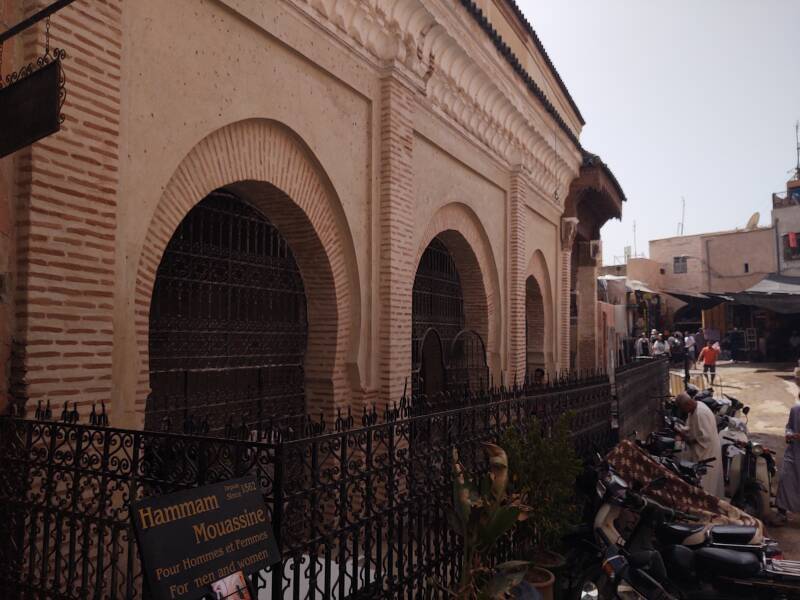
Here's how the fountain looked in a book published in 1904 — Things Seen in Morocco: Being a Bundle of Jottings, Notes, Impressions, Tales, and Tributes, by Alec John Dawson. Publishers just don't do subtitles the way they used to.
The Mouassine Fountain is rectangular with a corbel arch opening and a projecting canopy of carved cedar wood and tiles above. Various devotional phrases were carved and painted onto the fountain.
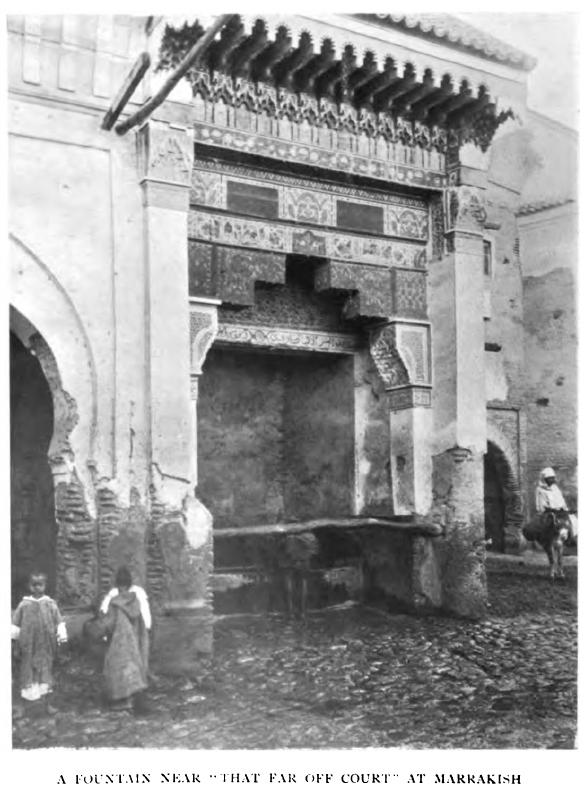
Picture from Things Seen in Morocco: Being a Bundle of Jottings, Notes, Impressions, Tales, and Tributes, Alec John Dawson, 1904.
Climate change has caused water tables to drop. Increasing population led to urban planning and new systems of water supply. The water supply systems started by the Almoravids were abandoned and the fountains were allowed to fall into disrepair. The ablutions room directly behind these fountains is still used, as they connected it to the new city supply.
O you who have believed, when you rise to perform prayer, wash your faces and your forearms to the elbows and wipe over your heads and wash your feet to the ankles. And if you are in a state of janabah, then purify yourselves.
— Quran 5:6
The fountain and drinking troughs were being restored when I was there.

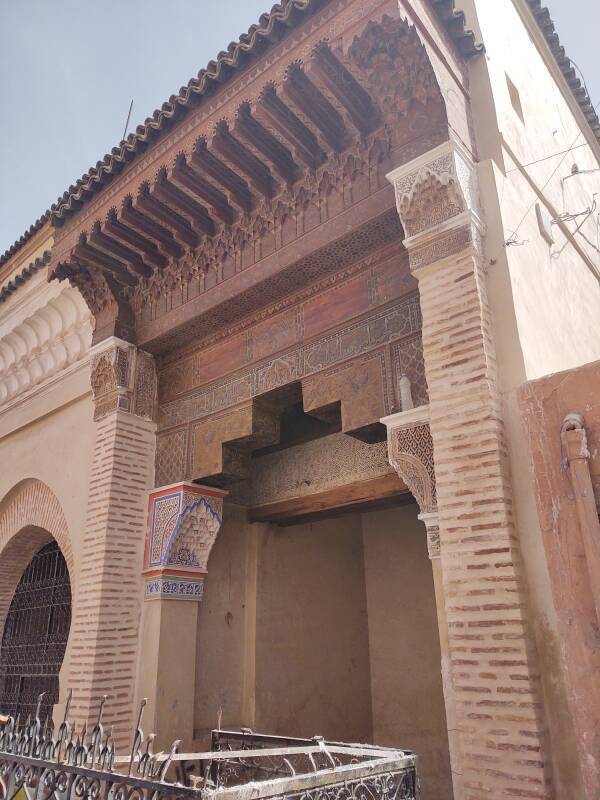
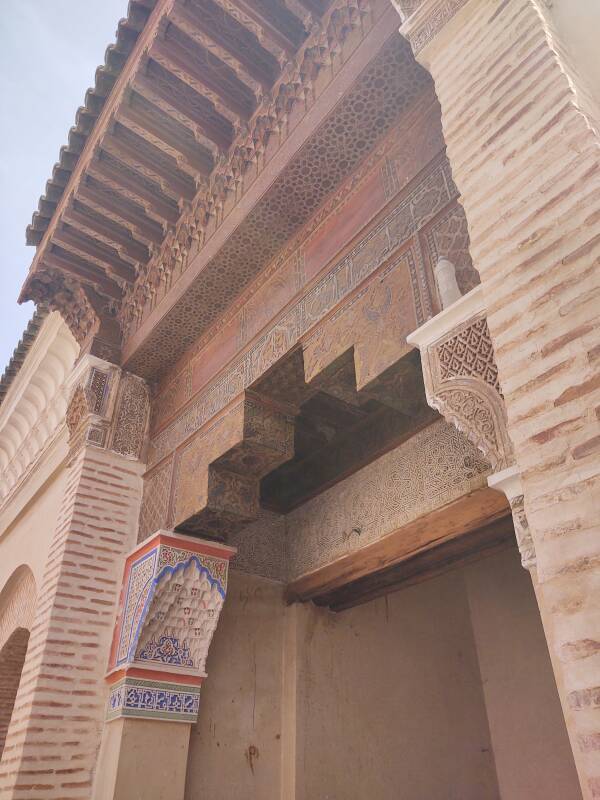
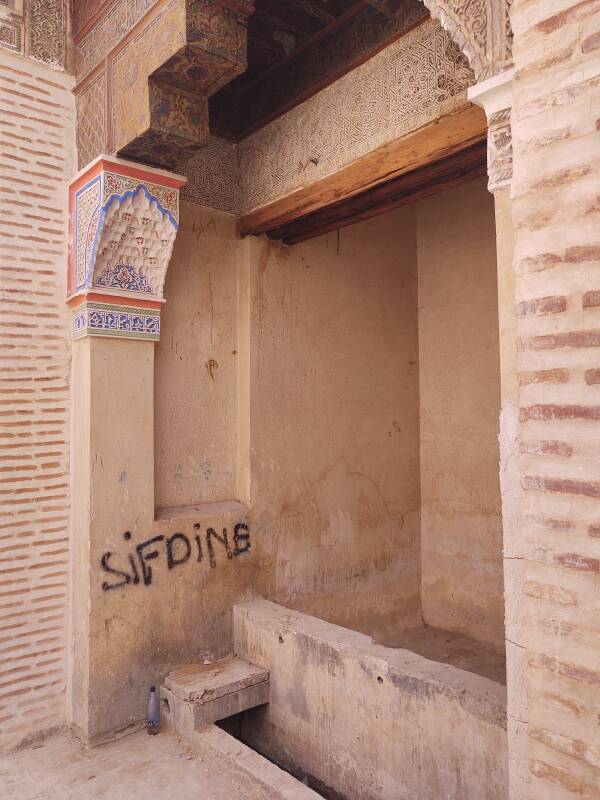
At the End of the Day
A man was headed into the narrow lanes of the medina transporting a large sheet of glass on a hand cart. And, he was attempting this at the peak of the late afternoon pedestrian rush.
I believe that the gesturing man was saying, "Old man, you won't even make it to the next corner with that sheet of glass!"
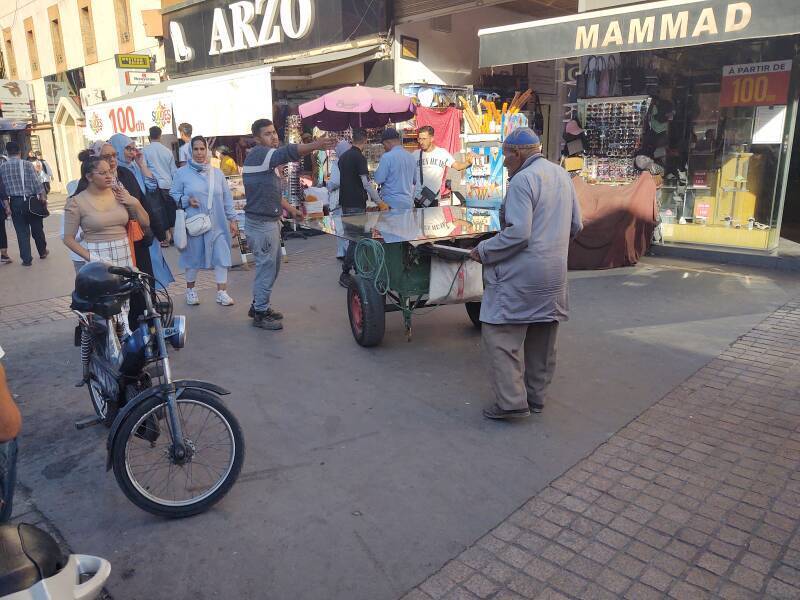
I returned to my guesthouse to look out over the medina. Then it was time to get cleaned up and head toward Jemaa el-Fnaa for some tea and people-watching.
